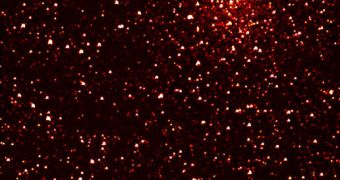NASA announced yesterday that the planet-hunting Kepler Space Telescope had finally taken its first snapshots of the sky portion it had been launched to analyze. The pictures reveal millions of stars in the observatory's field of view, and mission experts and controllers are optimistic that investigations could begin very soon. Kepler will mostly look at the Cygnus-Lyra region in our Milky Way galaxy, and its purpose is to detect very small planets, similar in size to the Earth. The way it does that is by assessing changes in brightness coming from the stars it looks at.
“Kepler's first glimpse of the sky is awe-inspiring. To be able to see millions of stars in a single snapshot is simply breathtaking,” Kepler's Program Executive Lia LaPiana, from the space agency's headquarters in Washington, DC, said. The 100-square-degree portion of the sky that Kepler was built to investigate houses an estimated 14 million stars, of which about 100,000 have been already designated as possible centers of gravity for Earth-sized planets.
“It's thrilling to see this treasure trove of stars. We expect to find hundreds of planets circling those stars, and for the first time, we can look for Earth-size planets in the habitable zones around other stars like the sun,” NASA Ames Research Center expert William Borucki, who is the principal science investigator for the Kepler mission, explained. “Everything about Kepler has been optimized to find Earth-size planets. Our images are road maps that will allow us, in a few years, to point to a star and say a world like ours is there,” Kepler's Project Manager James Fanson, from NASA's Jet Propulsion Laboratory (JPL) in Pasadena, California, added.
The telescope is scheduled to remain in an Earth-trailing orbit for about three and a half years, during which time experts expect it will find a large number of other planets, including gas giants, small rocky planets, asteroid belts, and so on. But the main goal of the missions is to discover worlds such as our own that orbit their stars in what is called a “habitable zone.” This concept refers to the distance from a star where temperature ranges are just right for the formation of liquid water. For example, the Earth is dead in the center of such a habitable zone, generated by our Sun, while Venus and Mars are a short way off.
Over the next few weeks, the telescope will continue to calibrate its science instruments and especially its photometer, which is the backbone of the entire mission. After small corrections are made to the observatory's orbit, it will be primed to make the first investigations. NASA engineers sighed with relief last week, when the lens cover on Kepler was successfully jettisoned and did not hit the telescope.

 14 DAY TRIAL //
14 DAY TRIAL //